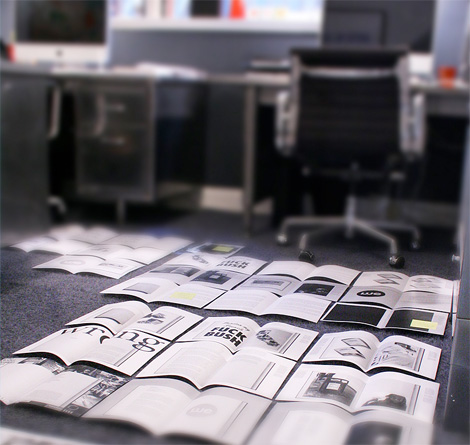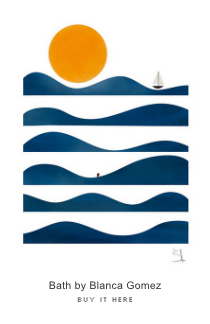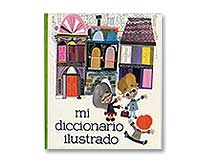A Quick Interview with Christopher Simmons

Examining some possible layouts.
We recently received news from long-time Grain Edit friends, MINE™, about their new book in the works, tentatively titled The Good Design Book. This book is aimed at those with a critical eye and an interest in how design can affect the greater good.
Combining essays from designers as well as showcasing approximately 70 projects, the book takes a current look this expanding movement, and offers resources for those looking to get involved.
You can get a glimpse into the making, writing, and designing processes of the book over at The Good Design Book Blog.
Amidst a busy schedule, Christopher Simmons was able to answer a few questions for us about the book. On to the interview!
You talk about design that is “problem seeking,” and that addresses critical causes. How do you define “Good Design”?
“Problem Seeking” is an idea that Brian Collins and I talked about following a trip to Alabama. He actually coined the term. Traditionally, designers have been taught and told that they are problem solvers. That’s a valid definition but one that generally presupposes that the designer is first presented with a problem which they are then asked to solve. Problem seeking allows the designer to decide for themselves what the issue is, and then apply their talents to some creative solution.
As for “Good Design” I frequently come back to the definition of design proffered by Charles Eames: “Design is a plan for arranging elements to achieve a particular purpose.” If you break that down, it contains 5 equal parts: the plan (strategy), the arrangement (layout or formalism), the elements (content), the achievement (result) and the purpose (the goal). Good design can therefore be thought of as design based on a good strategy and which features a good arrangement of good content for a good purpose. And of course it needs to yield good results. The goodness the purpose is where we’re placing the weigh of our evaluation for this book.
Are there any special requirements or skill sets needed to become “Good Designers”?
As a footnote to the above, our designer (Tim) suggested recently that the act of creating is missing from the Eames definition. I always assumed that to be implicit. Creation is central to our craft. With creation comes authenticity. Add to that a clarity of purpose and a genuine interest in making things — almost anything really — better, and you’re well on your way to being a “good” designer.
Having a blog to document the book writing, designing, and making processes is great. It gets people involved from an early stage, and keeps the whole thing transparent. How has the reception been so far?
Thanks. We’re getting decent traffic (about 4,000 unique visitors since we launched it a couple of weeks ago. There haven’t been any comments on the blog, but people have been emailing us with questions and ideas, and physical entries are starting to trickle in too. I’m really excited about documenting the process of planning, designing and writing the book, and sharing that with anyone who’s interested. So far I think people are into it, and blogs like yours, DESIGN21, Speakup and others have been generous with their support. As the blog and the book evolve I hope we can use it to share resources and ideas with people, not just information.
Is everything super top secret, or are there any exciting submissions you can talk about?
We’ll be dropping some hints about the submissions when that’s appropriate. We only have a handful now, but I know from past experiences that most of the work will come flooding in at the deadline. I did a book for Rockport a few years back and I think we literally received 300 FedEx boxes the day of the deadline (and about 300 the day after too). Of the stuff that’s come in, some of it is from some pretty well known folks, but good work can come from anywhere and we’re looking forward to seeing what amazing things people
are up to everywhere. I’m also reaching out to specific designers, clients and projects.
Be sure to check out the MINE™ studio tour, and Everything Is OK.
Tagscontemporary, Designers, graphic-design, Interviews, USA













































